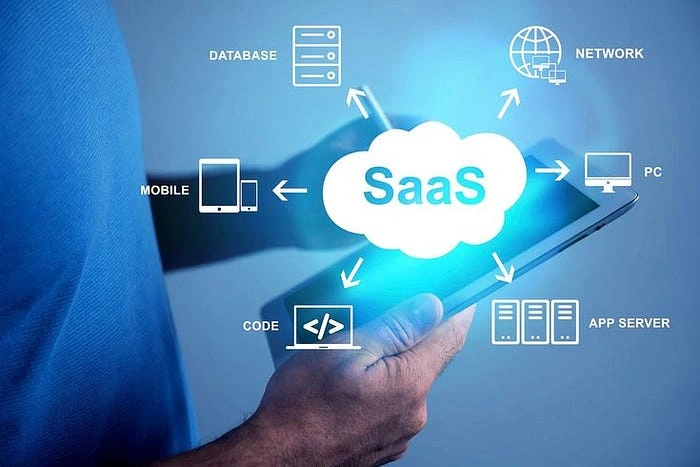Why Most SaaS Startups Fail (And How to Build a Product That Su…

Why Most SaaS Startups Fail (And How to Build a Product That Survives)
5 min read
Mar 15, 2025

Software as a Service (SaaS) has undeniably become one of the fastest-growing markets, driven by the increasing demand for convenience and efficiency in the digital space. As technology evolves, the SaaS industry remains at the forefront of innovation. However, despite its rapid growth, many promising ideas never see the light of day, often overshadowed by industry challenges and uncertainties. This has left many tech founders questioning whether success in the SaaS world is purely a matter of luck or if some untold strategies and insights could unlock new opportunities.
More than 92% of SaaS firms fail during the first three years. This indicates that only a small percentage of companies truly make it through this dynamic industry, which is concerning because it is evident that having brilliant ideas is no longer sufficient; what is needed is a company that perseveres in the marketplace. In this article, we will discuss about possible reasons why most SaaS startups fail and what you need to do as a tech founder to build a product that stands the test of time.
The Importance of Product-Market Fit
When it comes to software as a service, having a great idea isn’t enough; you also need to have one that is appropriate for the market you’re targeting. For example, if you give a Spider-Man-obsessed child a Pink Barbie toy instead, it will appear pointless to them because they do not need it. That is the extent to which the SaaS industry depends on product-market fit. It all goes down to making sure that what you’re offering to your audience consistently satisfies their needs. When a product is appropriate for its intended market, demand and value rise, which benefits the inventors financially.
The whole essence of a product should be to create ease for the consumers and solve a specific problem; if that purpose is defeated, then you would be certain that that product wouldn’t do too well in the market.
Crafting an Effective Marketing & Sales Strategy
For SaaS startups, marketing and strategy are paramount. You could even sell a subpar product and succeed in the market with the correct buzz and marketing plan. That’s the power of marketing. Imagine having a product that is ideal for the market, meets a growing need, and passes the product-market fit test. Then you combine all of that with a successful marketing and sales plan, and presto! Trust me, it works like magic.
90% of the marketing and sales strategies of successful startups today contain this secret. A poor marketing plan will sabotage even the best products and ideas. To keep customers interested, Netflix, for instance, uses a lot of user data to create customized promos, push alerts, and target email campaigns. This was certainly one of the reasons why their audience grew over time.
How to Build a Winning SaaS Product
We’ve discussed the importance of product-market fit and the role that successful marketing plays in the development of SaaS firms, but that’s not all. Let’s look at some more important factors to think about while creating a successful SaaS startup
1. Leveraging Customer Feedback
Every SaaS product is designed to cater to a specific demographic, which is known as the customers or consumers. Now, picture disregarding the opinions of the same individuals you are creating a product for; I promise you, it will be awful. One of the most crucial elements in determining whether a SaaS invention will succeed or fail is consumer feedback and evaluations on the product. The product is regularly improved to better meet the needs of the target market by utilizing evaluations and feedback.
No product is ever truly flawless, which is why your favorite beverage brand tends to undergo rebranding and modifications over time. This is because there is always a need for improvements and ongoing expansion to better serve the needs of the final consumer.
2. Standing Out Through Differentiation
Since SaaS is becoming more and more popular, any tech founder who has an idea wants to make a product out of it. However, the reality is that many businesses fail miserably in the market because they are just like everything else that is currently available out there. What about adding a little twist to your product? Think creatively and use a fresh approach. What keeps a product going beyond its early phase is its uniqueness.
3. Developing a Winning Pricing Strategy
Because SaaS pricing differs from traditional business pricing, it may seem impossible to create a pricing strategy that would generate a lot of sales, but believe me, there is still a successful pricing approach. Given the unique nature of each product, it is critical to design a pricing plan that works for your target market. To gain a competitive edge in your own price strategy, I always advise spying on your competitors’ pricing strategies. Look at the pricing model they are currently utilizing. Always remember that the ultimate goal should be to make your service easy and accessible to your customers.
4. Build a Loyal Customer Base
A devoted clientele is what opens up your business to a larger audience using their candid evaluations and comments. Building a SaaS product is much more than simply getting people to use it; it’s also about using your initial customers to test and improve the product based on their candid feedback so that it can be used by a larger audience. We can all agree that reviews and feedback are basically all that count in today’s society, and that one positive review can influence someone to make a decision right away. Building a following of devoted consumers who truly enjoy your work and using their comments to pique the interest of others is what you want to do with your startup.
4. Measure and Optimize Key Metrics
SaaS growth levels need to be tracked, and optimizing is crucial for future growth. For SaaS startups, data analysis is an essential component that cannot be overlooked. Future likelihood studies can be measured with continuous date analysis, which can aid in determining whether to take the next step to guarantee a product lasts a long time on the market.
5. Embrace Continuous Improvement
Continuous adjustments based on feedback, whether positive or negative, will undoubtedly help products succeed in the marketplace. Since software has become an increasingly significant part of our lives, it is crucial to understand that customer preferences might vary over time and that you should always adapt your service to meet their current demands.
Like this project
Posted Apr 4, 2025
Software as a Service (SaaS) has undeniably become one of the fastest-growing markets, driven by the increasing demand for convenience and efficiency in the di…






